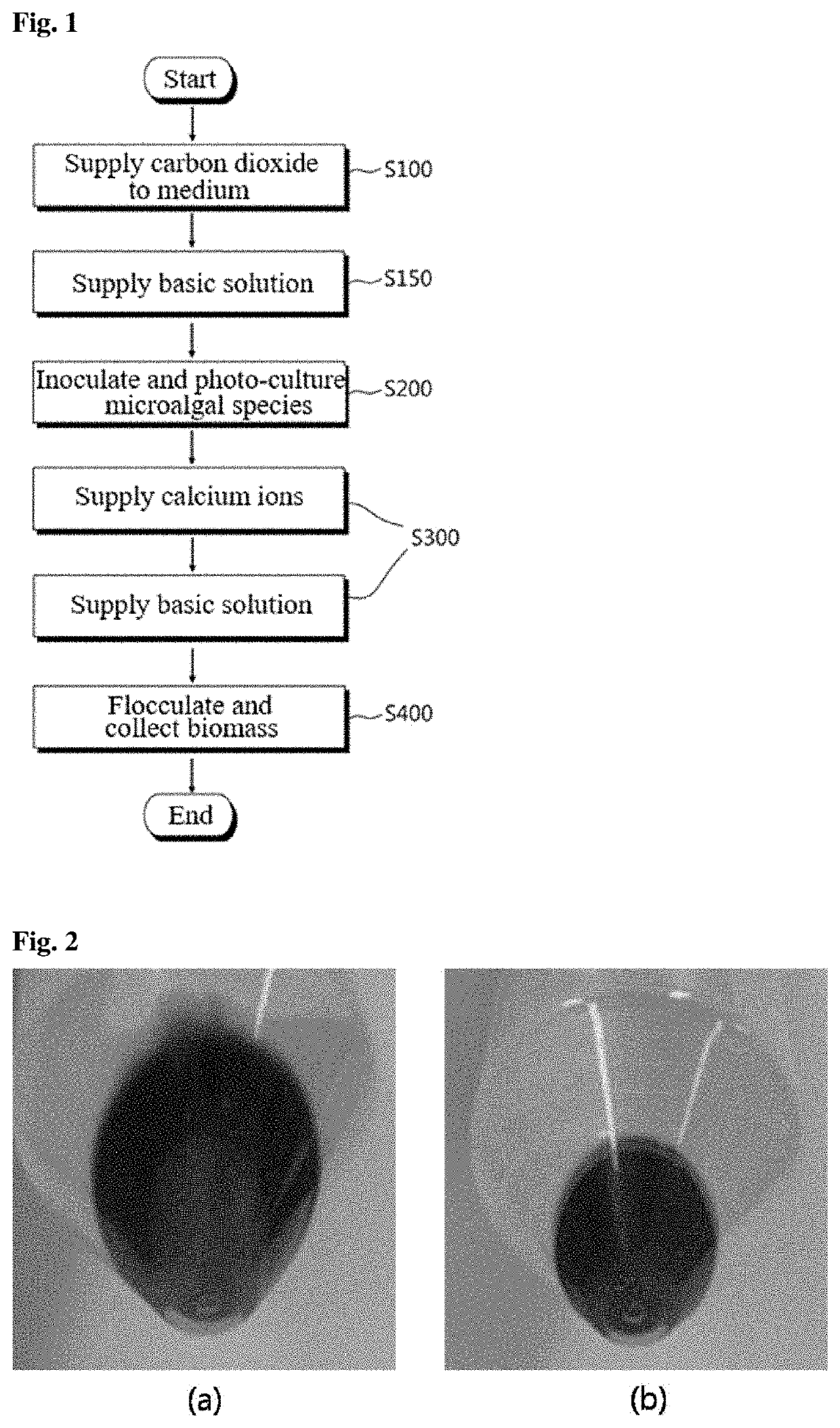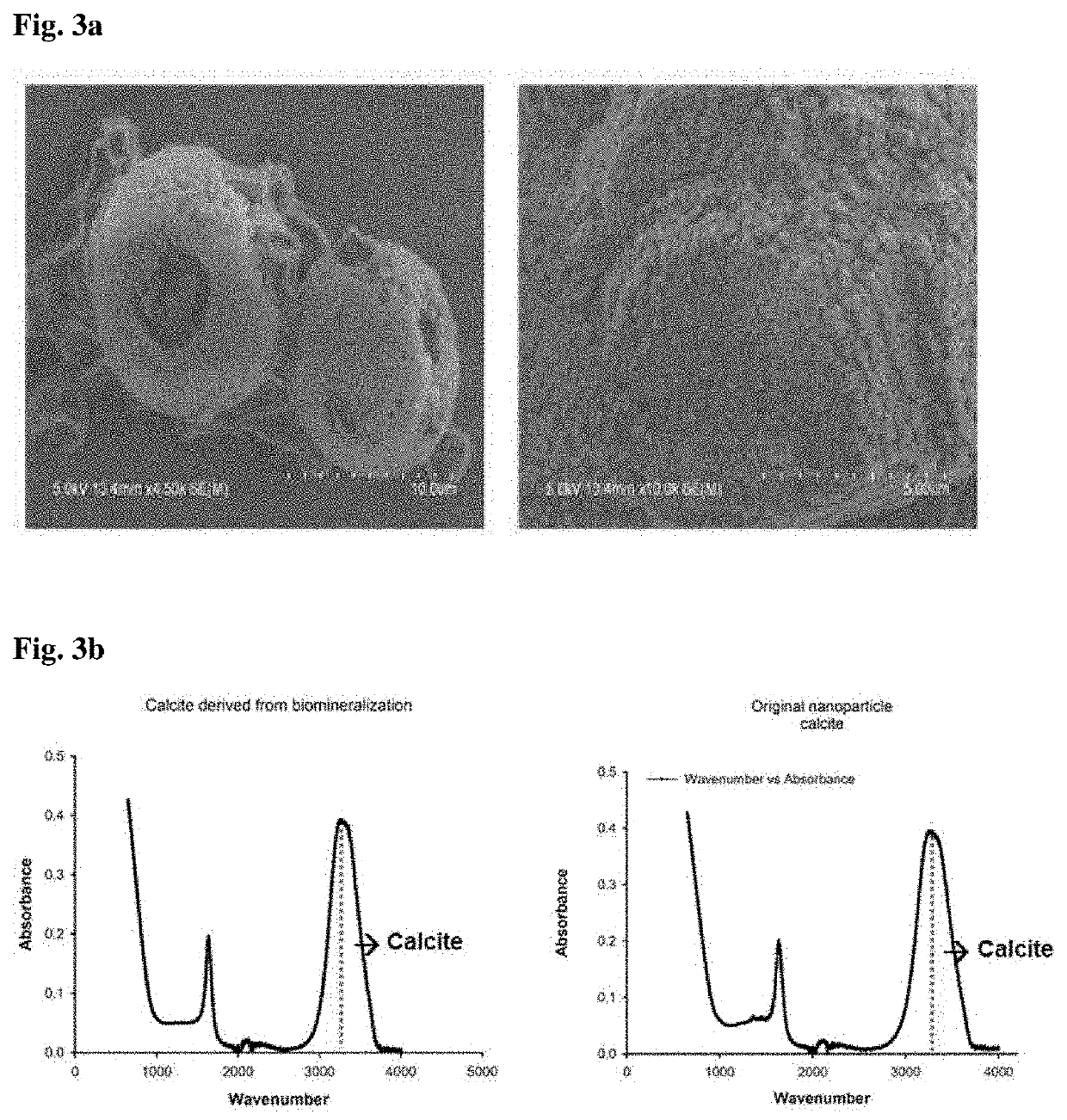Method for carbon resource utilization
a carbon resource and utilization technology, applied in the field of carbon resource utilization, can solve the problems of ccs technologies substantially difficult to realize, biological processes have the limitation of low cosub>2 /sub>reduction rate per unit area in view of their characteristics, and pose a threat to all living organisms on earth, including humans
- Summary
- Abstract
- Description
- Claims
- Application Information
AI Technical Summary
Benefits of technology
Problems solved by technology
Method used
Image
Examples
example 1
ION OF EXPERIMENTAL SETUP
[0059]Ten 500 ml graduated cylinders (width: 5 cm, height: 60 cm) were prepared to dissolve a large amount of carbon dioxide because general flasks can accommodate only a limited amount of dissolved carbon dioxide.
[0060]Each graduated cylinder was equipped with a versatile silicone stopper capable of closing the opening and through which gas injection and sampling could be done. Two Teflon tubes as gas and sampling lines were inserted into 2-3 mm holes formed in the stopper. The tubes were cut corresponding to the height of the graduated cylinder. A stone sparger for the supply of air containing 3% carbon dioxide was connected to the bottom end of the Teflon tube for gas supply.
example 2
L PHOTO-CULTURE
[0061]TAP-C was used as a medium. After 450 ml of the medium was introduced into each graduated cylinder, aeration was performed to inject carbon dioxide into the medium. A 9 mM aqueous KOH solution was introduced to increase the alkalinity of the medium. The pH of the medium was maintained between 7.5 and 8. Neochloris oleoabundans and Chlorella sorokiniana were used as microalgal species. Each of the microalgal species was inoculated at an initial density of 0.05 g / l, based on biomass. Light was irradiated at 300 μE / m2 / s for 3 days. The final culture volume was adjusted to 500 ml.
example 3
ON OF BIOMASS PRODUCTION AND BIOMINERALIZATION IN INDUCTION STAGE
[0062]Five graduated cylinders were used for each strain. The microalgal species were mixed in a 5 liter-glass container equipped with a stopper capable of closing the opening such that their concentrations in the graduated cylinders were the same. The microalgal species (50 ml each) were further added. In the induction stage for lipid accumulation (that is, when each microalgal species was cultured to a density of 1.0-1.5 g / l), 0.02 M, 0.05 M, and 0.08 M aqueous CaCl2 solutions were added to the different graduated cylinders. 1 ml of a 10 M aqueous KOH solution was supplied (that is, a 20 mM aqueous KOH solution was primarily supplied) to each graduated cylinder to maintain a pH of ≥7.5. Finally, calcite-containing biomass was produced.
PUM
 Login to View More
Login to View More Abstract
Description
Claims
Application Information
 Login to View More
Login to View More - R&D
- Intellectual Property
- Life Sciences
- Materials
- Tech Scout
- Unparalleled Data Quality
- Higher Quality Content
- 60% Fewer Hallucinations
Browse by: Latest US Patents, China's latest patents, Technical Efficacy Thesaurus, Application Domain, Technology Topic, Popular Technical Reports.
© 2025 PatSnap. All rights reserved.Legal|Privacy policy|Modern Slavery Act Transparency Statement|Sitemap|About US| Contact US: help@patsnap.com



